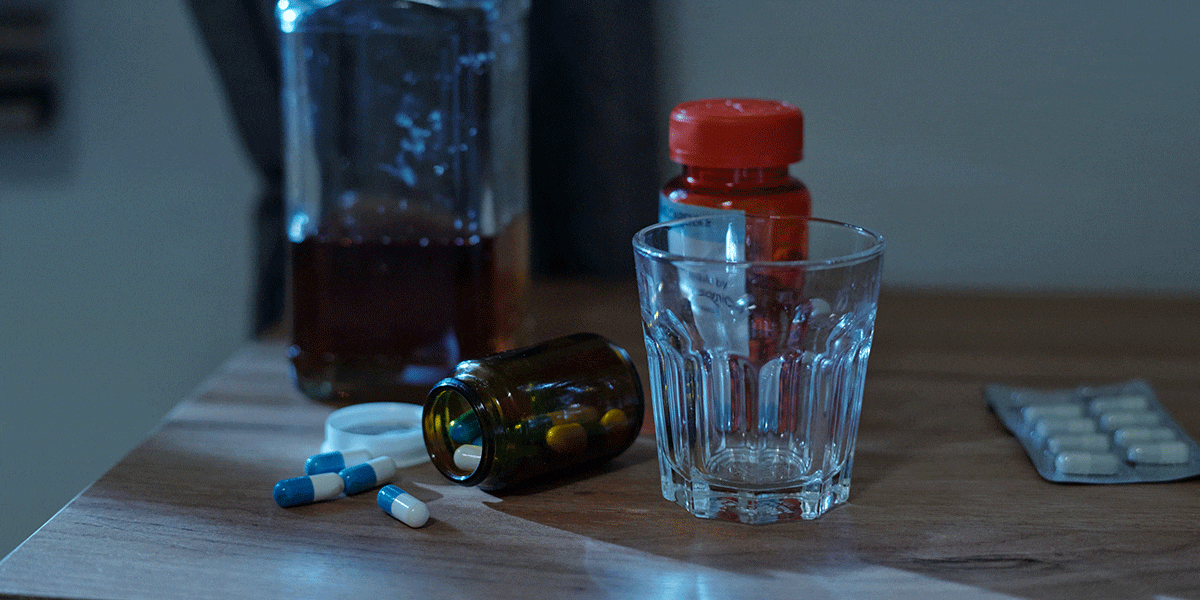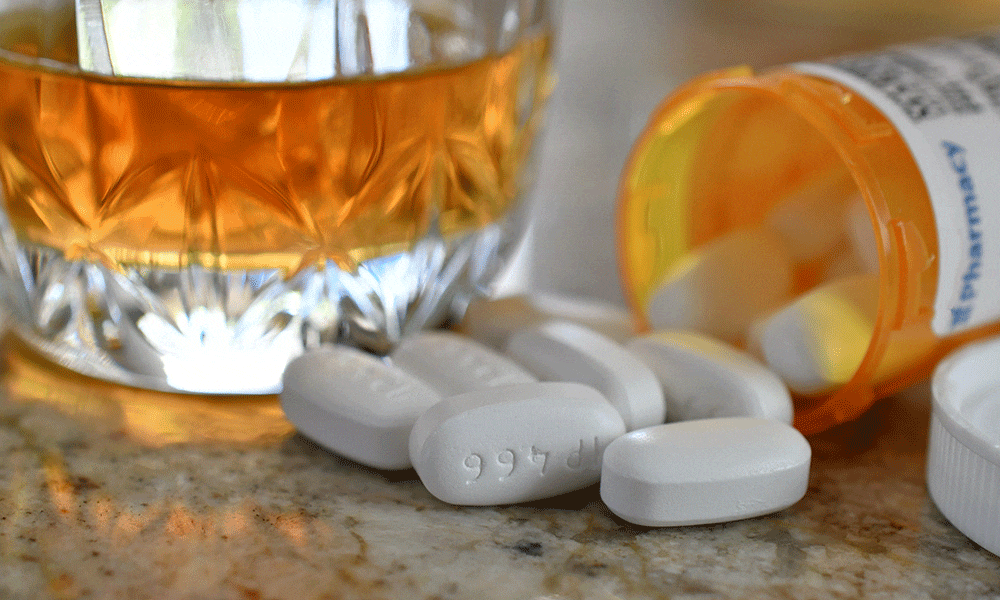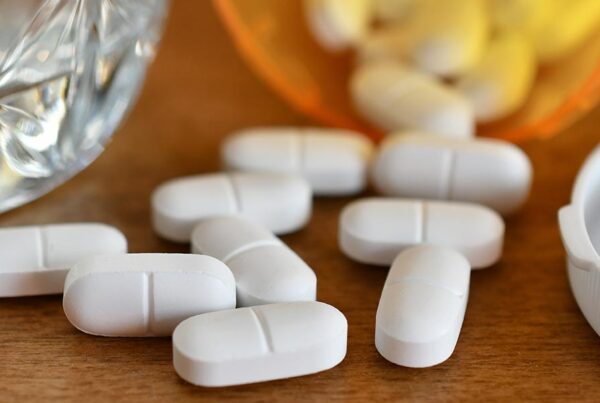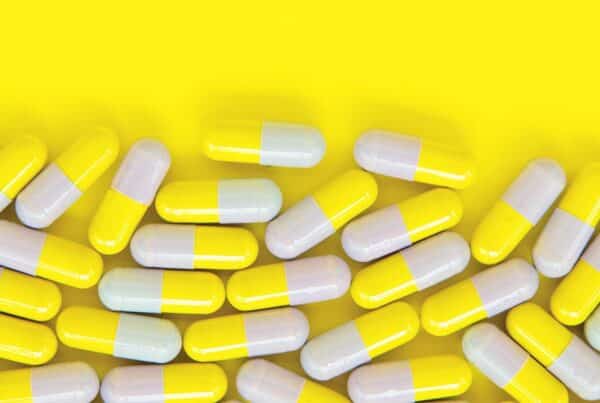
Table of Contents
Key Points
- Lean is a drug-infused beverage that typically contains codeine cough syrup, a mixer, and sometimes alcohol.
- Standard urine tests typically detect lean for 1-2 days, but this window is prolonged for those who consume it more frequently.
- If you need help with a lean problem, professional services are available.
Also known as “purple drank” or “sizzurp,” lean was the drug concoction of choice among blues musicians as far back as the 1960s, though they hadn’t formally given it a name yet. In the several decades since then, lean has been co-opted and named by the hip-hop community, and it saw a significant resurgence in popularity in the 2010s.
Lean stays in your system longer than you may think. In addition to the harmful effects of the drug, understanding how long lean stays in your system is essential for making informed decisions about your health.
What Is Lean?
Lean is a beverage made with cough syrup, sugary mixers like sweet sodas or candy, and in some cases, alcohol.
Prescription cough syrups used in lean usually contain codeine, an opioid cough suppressant, and promethazine, an antihistamine that can cause sedation. These two ingredients are responsible for the drug’s tranquilizing and euphoric effects.[1] Adding alcohol can enhance these effects, but it also increases the risk of serious side effects.[2]
Codeine’s effects on the central nervous system may cause respiratory depression, a condition in which breathing becomes less frequent and shallower as the body struggles to maintain adequate oxygen levels.[3]
Taking codeine recreationally and/or combining it with alcohol significantly increases this risk. Due to the sweet flavor and the party environment in which this drug is usually consumed, many people accidentally take high doses without realizing it.
How Long Does Lean Stay In Your System?
It’s important to understand that most standard drug tests will not screen for promethazine, though special tests can be calibrated to do so. Standard drug tests do typically detect codeine, however, without any modification.
Codeine remains detectable for 1-2 days in most people, when referring to a urine test.[4] When drug tests detect codeine, they’re actually detecting what the liver converts codeine into, which is morphine. A wide range of personal and environmental factors influence how quickly your body eliminates the drug and whether or not it will be detectable by a drug test within a specific window of time.
Individual Metabolism Factors
Your metabolic rate directly impacts how quickly you eliminate substances, including codeine, from the body. A higher metabolism means the body requires less time to process drugs and other substances out.
Age is one of the strongest predictors of your metabolic rate. As age goes up, metabolic rate typically goes down.
Body composition is an often-overlooked factor when it comes to metabolism. The higher your muscle-to-fat ratio, the faster you can clear drugs and other substances from the body.
Liver and kidney health are essential for drug metabolism. People with liver disease or kidney problems will likely take significantly longer to metabolize many substances, including the codeine found in lean.
Finally, genetic factors influence how efficiently your liver can break down opioids. Regardless of the above factors, some people are simply genetically predisposed to metabolize codeine more quickly than others.
Amount and Frequency of Use
Lean may clear your system within just one to two days if you’ve only consumed it one time, but those who consume it on a regular basis may test positive for codeine metabolites for several days longer.
A higher dose will also prolong the amount of time codeine remains detectable in your system. Chronic opioid use alters brain chemistry and metabolism, potentially slowing clearance rates.[5]
Hydration and pH Levels
Proper hydration helps flush metabolites from your system faster. Dehydration slows the elimination process. Urine pH affects how long codeine metabolites remain detectable. More acidic urine typically clears drugs quickly. However, attempting to manipulate pH levels can be dangerous.
How Long Is Lean Detectable On Drug Tests?
Detection times vary significantly depending on the testing method used. Each type of test has different sensitivity levels and windows.
Urine Tests
Urine tests can detect codeine for 1-2 days after use.[6] This is the most common drug screening method. Standard urine panels specifically look for codeine and morphine metabolites. These tests are highly accurate for recent use.
Urine concentration and timing affect detection reliability. First morning urine typically shows the highest concentrations.[7] Heavy users may test positive for several days. The drug accumulates with repeated consumption.
Blood Tests
Blood tests detect lean for up to 24 hours after consumption.[8] These tests show active drug presence in your system. Blood screening is less common due to the shorter detection window and greater inconvenience. It’s typically reserved for accident investigations or medical emergencies.
This method provides the most accurate picture of recent intoxication levels.
Saliva Tests
Saliva tests can identify codeine use for 1-4 days.[9] These are becoming more popular for roadside testing.
Oral fluid testing is convenient and harder to manipulate than urine samples. Results correlate well with blood levels. The detection window depends on how much saliva you produce naturally.
Hair Follicle Tests
Hair tests can detect lean use for up to 90 days.[10] This method shows longer-term usage patterns.
Hair follicle screening is expensive but provides the longest detection window. It’s often used for employment screening.
Factors That Influence Drug Test Results
Several variables can affect whether you test positive for lean consumption. Understanding these helps explain unexpected results.
Testing Sensitivity Levels
Different tests have varying sensitivity thresholds. More sensitive tests detect lower concentrations of metabolites.
Standard workplace screenings typically use higher cutoff levels. Medical or legal testing may use more sensitive methods.
Cross-Reactivity Issues
Some legal medications can trigger false positives for codeine. Over-the-counter cough medicines sometimes contain related compounds. Poppy seed consumption can also cause positive opioid tests. These seeds contain trace amounts of natural opiates.
Always disclose prescription medications before testing. This helps explain legitimate positive results.
Individual Variation
No two people eliminate drugs at exactly the same rate. Personal factors create significant variation in detection times.
Age, weight, health status, and genetics all play roles. What applies to others may not match your experience. CYP2D6 enzyme activity affects codeine metabolism significantly. Some people are poor metabolizers, while others process it ultra-rapidly.[11]
Getting Help for Lean Addiction
Recovery from lean addiction is possible with proper support and treatment. Professional help significantly improves your chances of achieving a full recovery and avoiding relapse.
Detoxification Process
Medical detox helps manage withdrawal symptoms safely. Healthcare providers can prescribe medications to ease discomfort.
The process typically takes 3-7 days for physical symptoms. Psychological effects may persist much longer.
Having medical supervision prevents dangerous complications during withdrawal.
Treatment Options
Comprehensive addiction treatment addresses both physical and psychological aspects. Multiple approaches work best together. Behavioral therapy helps identify triggers and develop coping strategies. Group counseling provides peer support and accountability.
Medication-assisted treatment may be appropriate for some individuals. Certain medications help reduce cravings and prevent relapse.
Recovery Support
Long-term recovery requires ongoing support and lifestyle changes. Building a strong support network is essential.
Support groups connect you with others facing similar challenges. Sharing experiences helps maintain motivation.
Developing healthy habits replaces drug-seeking behaviors. Exercise, hobbies, and social activities provide positive outlets.
Finding a Sustainable Solution
If lean or codeine addiction has become a problem in your life, help is available. Professional treatment programs with drug and alcohol rehab centers offer comprehensive support for recovery.
Don’t let shame or fear prevent you from seeking assistance, whether for yourself or for a loved one. Addiction is a medical condition that responds well to proper treatment.
Recovery is possible, and you deserve a healthy, fulfilling life. Take the first step by reaching out for help today.
Frequently Asked Questions
OCEAN RECOVERY EDITORIAL GUIDELINES
The internet contains a vast amount of misinformation, but when it comes to your health only peer reviewed, research centered data matters. At Ocean Recovery, all content published throughout our website has been rigorously medically reviewed by a doctorate level clinician, and cross checked for medical accuracy. Our editorial process helps our readers trust that the information they are consuming is factual and based upon scientific data. Your health is our top priority, find out more about how we safeguard the integrity of information on our website. Read More About Our Process





